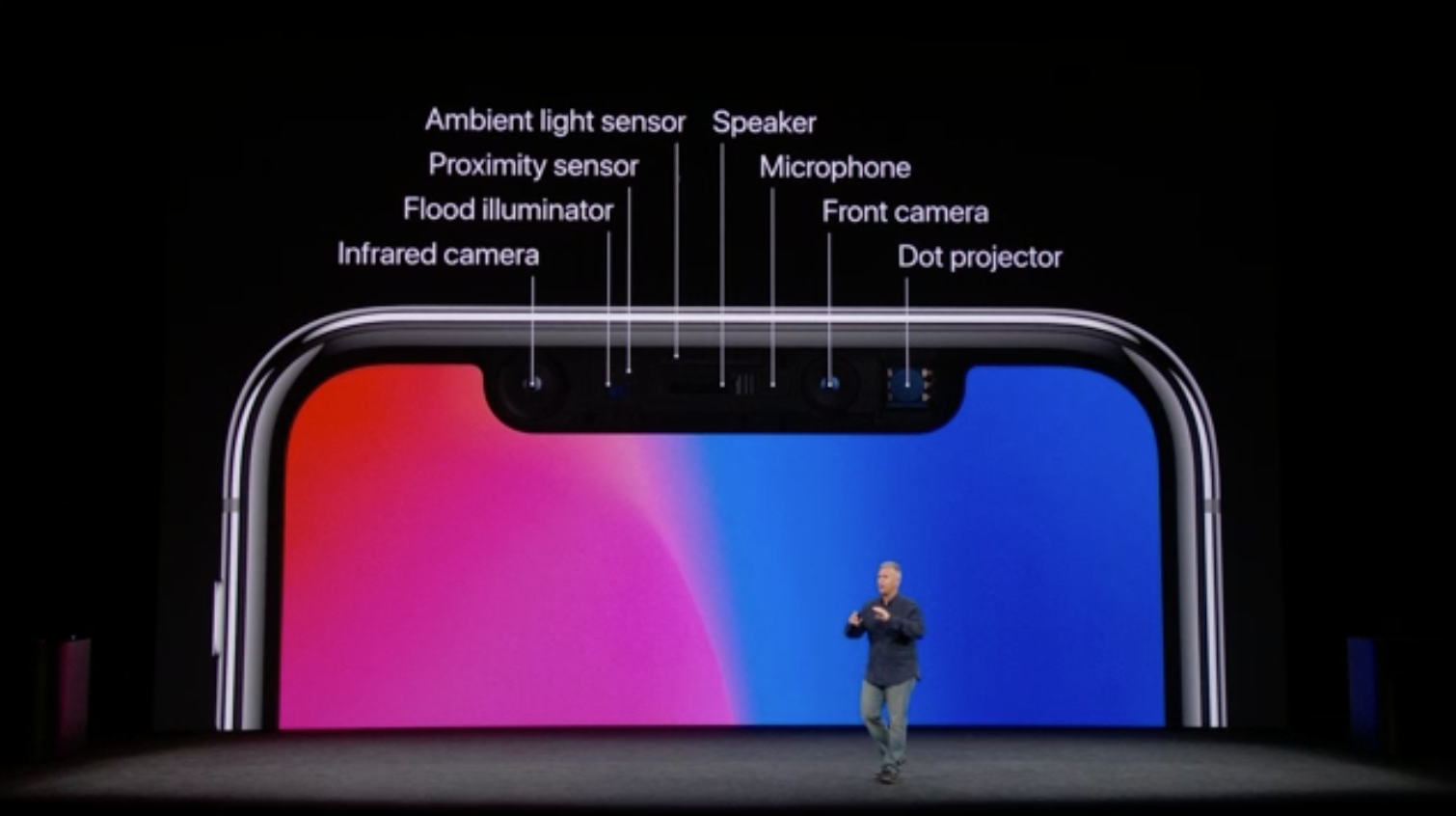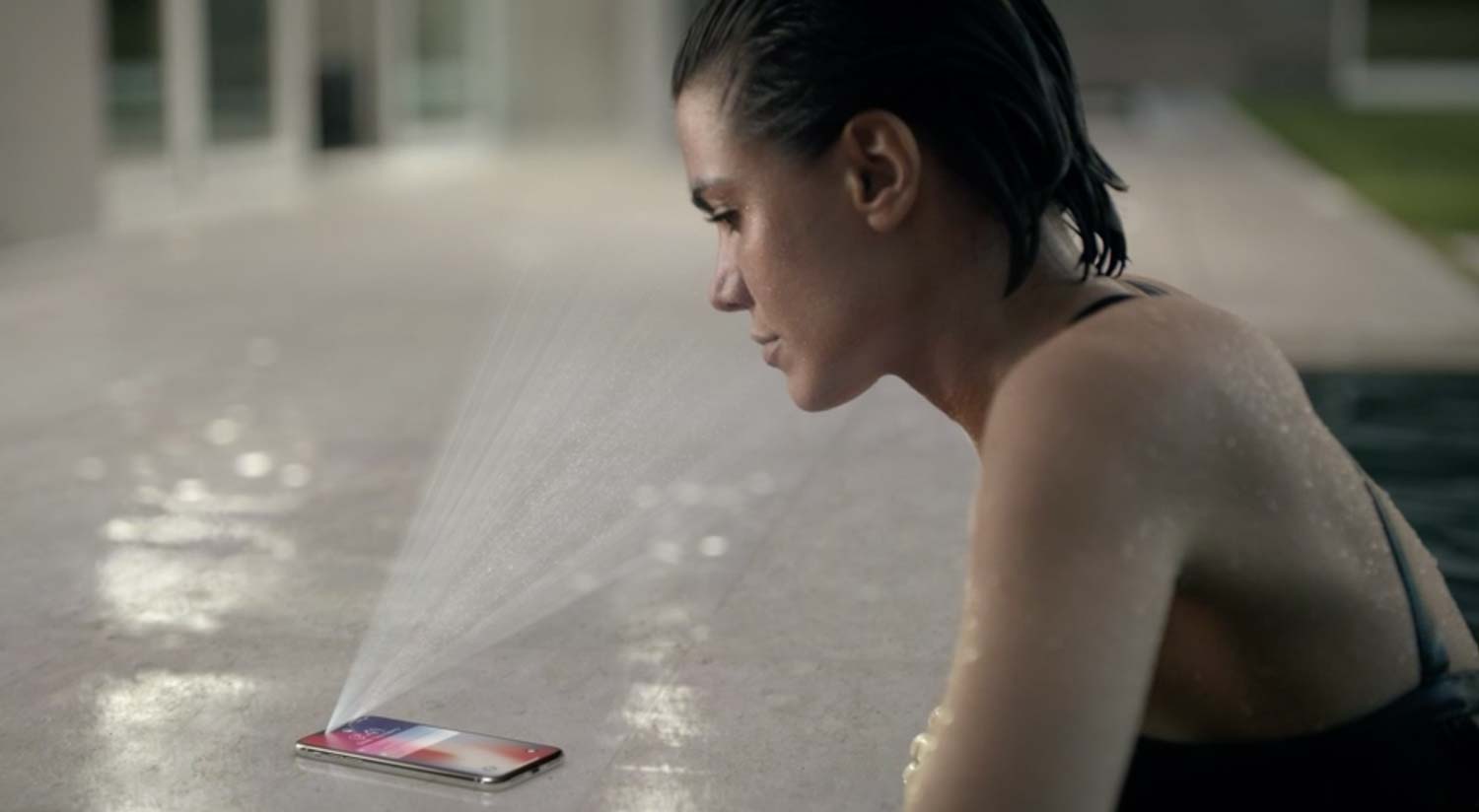What You Need to Know About Apple’s Face ID Feature
Face ID on the iPhone X will change the way you unlock your phone and pay for things. Here's what you need to know bout how Face ID works and how Apple intends to keep your identity safe.
Loads of questions surround Face ID, Apple’s depth-sensing facial recognition system featured in the upcoming iPhone X. As with any new technology, Face ID has been met with some skepticism, especially from iPhone users who enjoy the convenience of the fingerprint-based Touch ID.

Since the iPhone X lacks a fingerprint sensor, many customers will depend on Face ID to securely lock and unlock their devices and confirm purchases with Apple Pay. Alternatively, passcodes can still be used, and will be required as a fallback when you set up Face ID.
MORE: 5 Reasons to Skip the iPhone 8 for the iPhone X
Bearing that in mind, we’ve examined Apple’s highly informative, yet highly technical white paper on Face ID to answer all your burning questions about this new iPhone X feature.
How does Face ID work?
Face ID uses the iPhone X’s new TrueDepth imaging system, an array of cameras and sensors notched within the top of the phone’s front display that builds a 3D representation of your face. First, the front camera searches for the presence of a face when the device is woken. It then determines intent to unlock by reading your eyes. If you’re looking away from the iPhone X, Face ID won’t unlock the phone.

Once intent is established, the iPhone X comprises a 2D image along with a depth map, built from the projection of 30,000 infrared dots. By using infrared light, Face ID can still function in the dark.
The TrueDepth camera does not capture your entire face at once — rather, it collects segments, collected in a randomized sequence, which are translated into a mathematical representation. This is all done to protect your facial data, and make it harder for hackers to access and use.
Get instant access to breaking news, the hottest reviews, great deals and helpful tips.
These segments are then passed along to the Secure Enclave — a subsection of the iPhone X’s A11 Bionic chipset — where they are matched against similar data enrolled onto the device when you first set up Face ID.
How does Face ID account for diversity and changes in appearance?
Apple says it’s trained Face ID on a neural network of over a billion images, employing subjects all over the world, across different genders, ages, and ethnicities. The company has also developed the network with daily changes in mind, so it isn’t fooled by hats, scarves, glasses, or anything else you might wear over your face.

Furthermore, Apple says Face ID won’t be thrown off by beards, haircuts, or makeup because it updates your enrolled facial data over time with segments of successful matches. This means your Face ID profile is designed to change as you do. And in the event that Face ID doesn’t recognize you and prompts you to enter a passcode, Face ID will still update your portrait with new segments if you still successfully unlock your device and meet a certain matching threshold.
When will I be unable to use Face ID?
There will be times when Face ID is automatically deactivated, and you’ll be required to dial in your passcode. It’s similar to how Touch ID operates after a number of unsuccessful attempts, or after you restart your iPhone X. Here are the circumstances when you’ll be unable to use Face ID, directly from Apple:
- The device has just been turned on or restarted
- The device hasn’t been unlocked for more than 48 hours.
- You haven’t used your passcode to unlock the device in the last 156 hours (six and a half days), and Face ID has not unlocked the device in the last 4 hours.
- Your phone has received a remote lock command.
- There have been five unsuccessful attempts to match a face.
- You’ve initiated power off/Emergency SOS by pressing and holding either volume button and the side button simultaneously for 2 seconds. This can be used anytime you wish to instantly turn off Face ID.
How easy is it to fool Face ID?
Face ID actually uses two neural networks — one to aid in matching, and another to prevent spoofing. Because of this, Apple says iPhone X is smart enough to tell when it’s looking at a photograph, or someone wearing a mask, and stop intruders at the lock screen.
As far as whether a doppelganger poses a risk to your security, Apple says the chance of a random stranger unlocking your device is actually less likely with Face ID than with Touch ID: 1 in 1,000,000, versus 1 in 50,000. However, the company warns that the probability increases between twins and siblings, or users under 13 years old. If you’re concerned about that, Apple simply recommends you unlock your phone the old fashioned way, with a passcode.
How secure is Face ID?
Apple is keen to point out that Face ID data never leaves your iPhone X. It’s stored locally and encrypted in the A11 processor’s Secure Enclave. Because of the randomized and segmented nature of the way your portrait is stored, and because the device only retains the mathematical representation of your face (the images are discarded after unlocking), Apple says the iPhone X “carefully safeguards the privacy and security of your biometric data.”
MORE: 7 Easy Ways to Get Your Identity Stolen
The only situation in which your data will reach Apple’s servers is if you turn to AppleCare for support. To do this, you’ll have to enable Face ID Diagnostics, which deletes your existing data and ask you to set up a profile again. Your iPhone will then record your unlock attempts for the next week, though you’ll have full control over which examples you send out, and Apple will offer guidance to get the system working properly. You can choose to end diagnostics at any time; when you do, all locally stored data is deleted. We reached out to Apple to find out what happens to its copies of those images after they’ve been used for diagnostics, and we’ll update this guide when we hear back.
Can third party apps use Face ID?
While third party apps can employ Face ID for authentication, absolutely no data communicated to Face ID is shared with these apps. The iPhone X simply relays a message, confirming whether the attempt was successful or not. This allows Face ID to be used across all software just like Touch ID, while keeping personally identifiable information at a distance. And as always, you’ll be unable to use Face ID without a passcode as a fallback.
How does Face ID work with Apple Pay?
Whether you’re using Face ID for a transaction in-store or online, the process is mostly the same. First, double click the iPhone X’s side button, then confirm your identity with Face ID. If you’re at a brick-and-mortar retailer, at this point you’d place your iPhone X against the payment terminal. If the transaction is not completed within 30 seconds of authentication, you’ll have to double click the side button again.
Adam Ismail is a staff writer at Jalopnik and previously worked on Tom's Guide covering smartphones, car tech and gaming. His love for all things mobile began with the original Motorola Droid; since then he’s owned a variety of Android and iOS-powered handsets, refusing to stay loyal to one platform. His work has also appeared on Digital Trends and GTPlanet. When he’s not fiddling with the latest devices, he’s at an indie pop show, recording a podcast or playing Sega Dreamcast.
